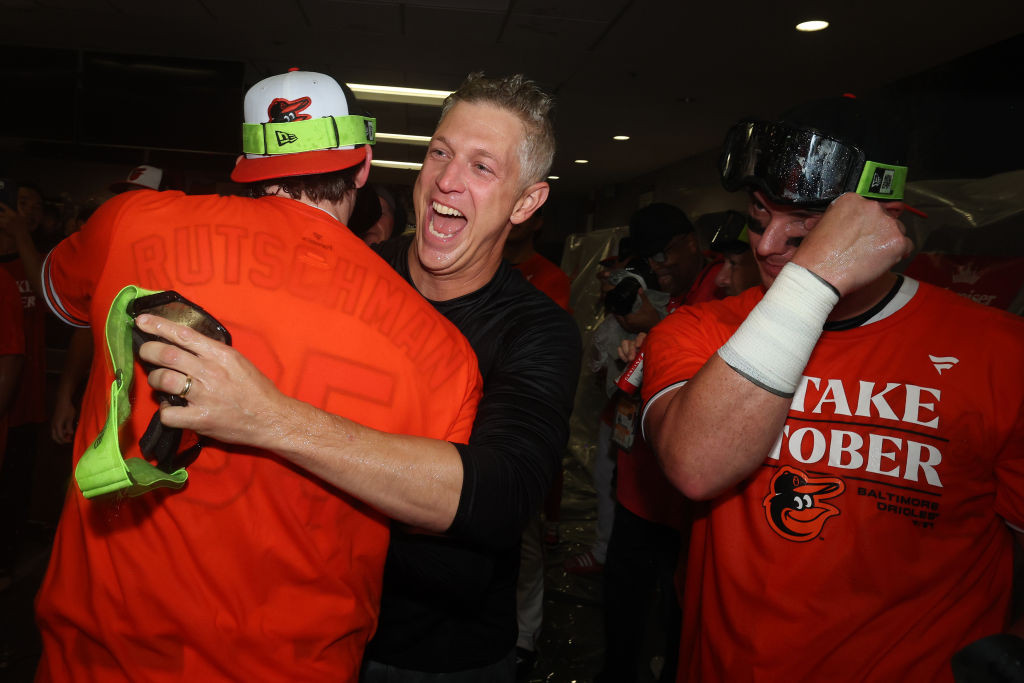Money remains a determining factor in free agency, with the most lucrative offers usually winning out. The game’s evolution still has its limits. Some things stay the same.
However, the Orioles are finding that they’re a more attractive destination after emerging from the rebuild.
The perception of the organization has shifted, and more dramatically than the left field wall.
It won’t make Shohei Ohtani regret the $700 million he’s getting from the Dodgers, but the selling points are beginning to multiply.
“It’s been really refreshing and it’s such an easy conversation for Brandon Hyde and I to explain why this is a good place to come play,” executive vice president/general manager Mike Elias said at the Winter Meetings.
“Particularly on the pitching side. I know we haven’t gone bonkers with pitching free agent acquisitions since we moved the wall back, but even just bringing Jordan Lyles or Kyle Gibson in on short-term contracts, then having them have some of the better years of their careers and then go back out on the market, parlay that into better dollars, that’s a first for the Orioles franchise.
“I think historically you look and it was just a tough place to sign pitchers and it would often involve overpays or waiting for guys to not have jobs in spring training. It was just really uphill sledding. So just even on minor recruitments, that has become easier. It’s obviously a very pleasant, exciting clubhouse vibe. It’s just all things positive.”
Gibson turned down the same offer from the Blue Jays last offseason, per a report in The Athletic, to sign with the Orioles for $10 million. Lyles, a friend and former teammate, sold him on the idea, noting how they were a team on the rise with a budding superstar behind the plate and analytics-driven pitching instructors who could bring out the best in him.
“That was appealing,” Gibson said after signing. “That was really cool to hear him give credit where he thought credit was due, talk about the makeup of the team, talk about even things like pitching to (Adley) Rutschman. Just the things that stood out to him.”
Moving back the left field wall about 30 feet accomplished more than reducing the number of cheap home runs. The ballpark’s image also changed.
Right-handed hitters aren’t celebrating it, but the Orioles had to improve their chances with free agent pitchers.
The Orioles have come a long way from the 2000 Winter Meetings and former executive Syd Thrift’s classic line about shopping with “Confederate money,” his humorous reasoning for players and agents rejecting them.
It kept happening years later.
Catcher Iván Rodríguez and outfielder Cliff Floyd rejected them in the winter of 2002, which perpetuated the perception.
“It’s sort of hard to defend,” said Mike Flanagan, who had joined Jim Beattie in replacing Thrift at the head of the baseball operations department.
The Orioles offered Rodríguez, a future Hall of Famer, a three-year, $21 million contract with incentives that could have increased the annual salary to $10 million. He signed a one-year, $10 million deal with the Marlins in order to re-enter the market.
First baseman Paul Konerko stayed with the White Sox in the 2005 offseason for $5 million less than the Orioles’ five-year, $65 million offer. The Confederate money jokes were dusted and shared again.
The only solution was some gross overspending, like giving first baseman David Segui $28 million over four years in December 2000. Segui appeared in 82, 26, 67 and 18 games due to injuries – thumb, hamstring, wrist, knee - but the .349 on-base percentage would have been appreciated more today.
Thrift handed outfielder Marty Cordova $9.1 million over three years a day after they dined at Morton’s in Baltimore. Cleveland and Kansas City wouldn’t go more than two years.
That’s how long Cordova lasted with the Orioles, his injury history repeating like a stuffed pepper. He played 131 games in 2002 but only nine in 2003 before undergoing elbow surgery.
“I’ve talked to other players, and it’s not the place they want to play, because we’ve had some years where we’ve struggled,” Segui said in 2003. “Players can become front-runners like a fan does. Whatever team’s hot at that particular time is always the popular place to go.”
A 101-win season and best record in the American League. The top-rated farm system in baseball. Personnel and philosophies in place to avoid another crash.
A positive buzz after years of negative results and press.
“In terms of intangibles, I think we have a lot going for us and it’s really just competing on the contract that remains something that’s very competitive in our business and not easy to do,” Elias said. “But I do feel like we’ve got a really attractive destination from a baseball sense now, which is really nice to have under our belts.”
By accepting you will be accessing a service provided by a third-party external to https://www.masnsports.com/





